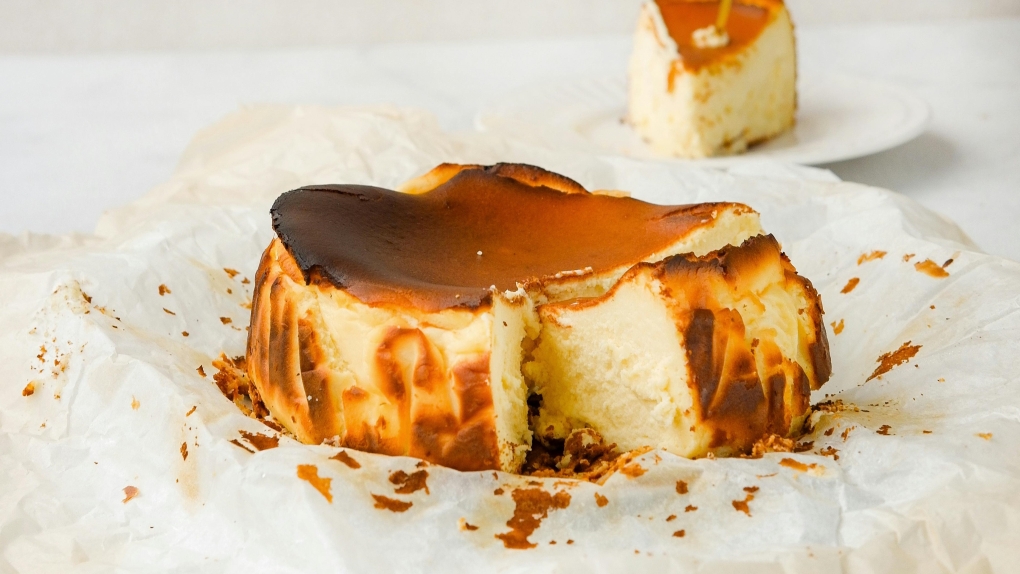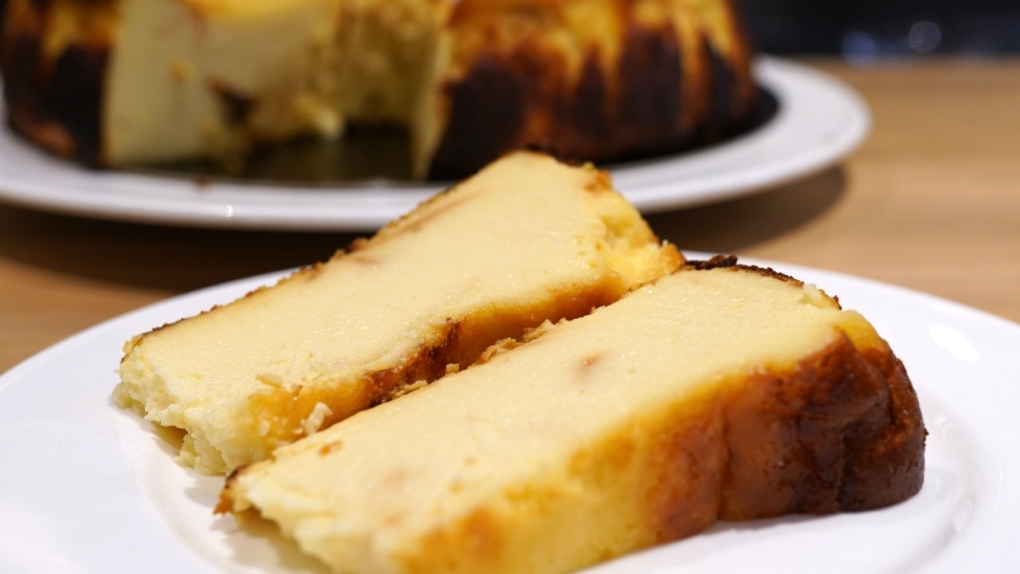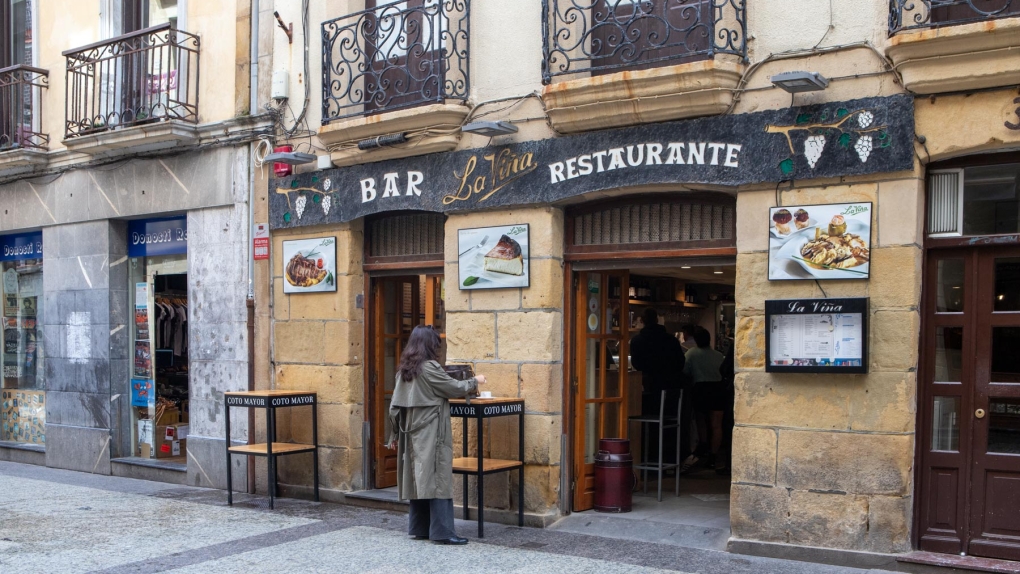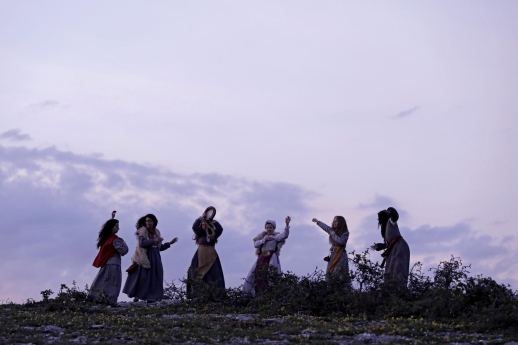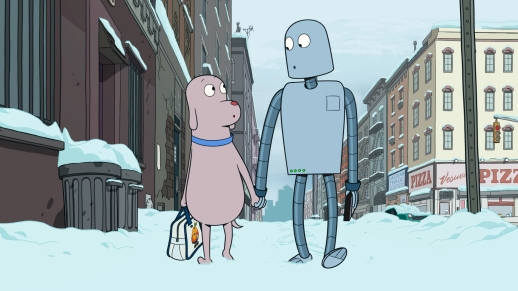If you haven’t heard of the Basque cheesecake, chances are you will soon. Not many dishes reach its level of viral success, with tags on social media nearing the millions and copycat cheesecakes popping up all over the world.
From San Sebastian to the World: The Story of Basque Cheesecake
23 May 2024This famous cheesecake, a lovely sight with a burnished top layer, often served still in its parchment paper-lined tray, was born in San Sebastián. It is there, on Calle 31 de Agosto, that sits La Viña, a family-owned bar famous for its cheesecake and ground zero of the Basque cheesecake phenomenon. La Viña is where the Basque cheesecake was born, at the hands of Santi Rivera, sold quietly by the slice since the 1990s. Read on to find out what makes Basque cheesecake so special, where it comes from, and how it’s made.
What Makes Basque Cheesecake So Special
On paper, the Basque gazta tarta, as it’s called in Euskera, doesn’t look much different than any old cheesecake. What makes Basque cheesecake so special, however, is more about what is missing.
Until the Basque cheesecake took the world by storm, crust on a cheesecake was de rigueur. The Basque cheesecake, however, does away with any base, cooked instead directly in contact with the bottom of the pan. This results in the characteristic golden exterior, which in and of itself forms an almost crust thanks to the high temperatures of the oven. ‘Normal’ cheesecake means delicate cooking at a low temperature, sometimes with a water bath—not so in the case of Basque cheesecake.
The Basque adaptation of cheesecake is also lighter and airier than a traditional dense, rich, New York-style cheesecake. Its center gives almost flan-like vibes, remaining jiggly and loose.
Another thing missing in a true Basque cheesecake is any type of garnish. These extras, from raspberry coulis to fresh berries, were the victim of streamlined processes in the small pintxo bar kitchen where this dessert was born.
Where Basque Cheesecake Comes From
Cheesecakes still line the walls at La Viña, the small bar on Calle 31 de Agosto, in the heart of San Sebastián’s old town. This bar is a family-run spot, now owned by its second generation—Santi Rivera. Opened in 1959 by Santi’s family, it was known mostly as a stop for wine and traditional food, until Santi came along. In the late 1980’s, when he took over, he didn’t exactly reinvent the wheel but he did enjoy running tests in the kitchen on his off days. Some of these tests didn’t last, some of them won awards (like his anchovy-cheese cone pintxo), and one of them turned into a viral global sensation.
The cheesecake everyone knows and loves today was the result of one of these tests, and he would make it occasionally for the bar. Regular customers began to request it more frequently, and before Santi knew it, they were going through a few each day. He would store them on shelves outside the kitchen, and the bar became famous for the cheesecakes that were at eye level for every pintxo-goer to see (and salivate over).
Why Basque Cheesecake is So Famous
But how did Basque cheesecake get so famous? There are many factors, but the most important one is likely the fact that its birth coincided with the beginning of San Sebastián’s rise in popularity. Pintxo tours started in the 2000s, and the old town filled with hungry visitors, many of them finishing their tour at La Viña. The internet swooped in, and Instagram and Trip Advisor boosted the profile of this humble dessert.
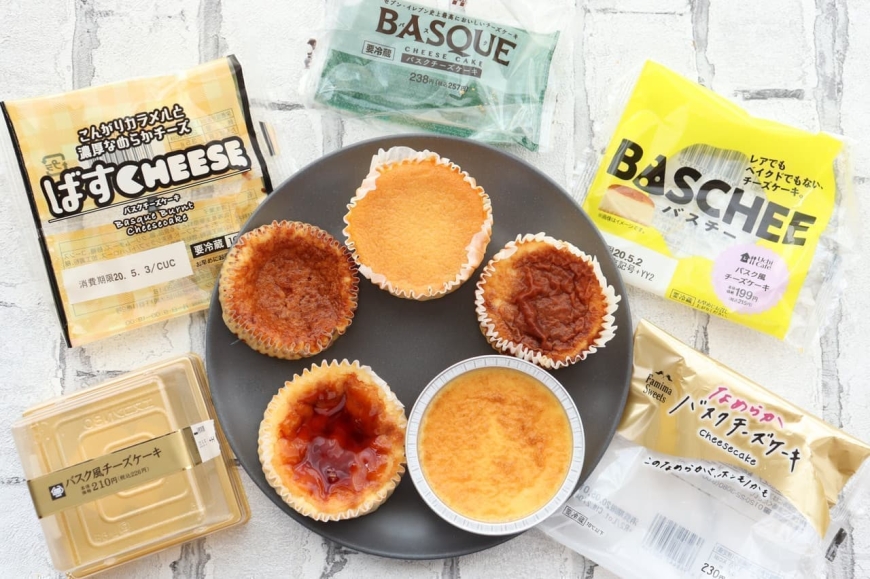
How to Make Basque Cheesecake
The mystery of Basque cheesecake most certainly does not lie in its ingredient list. Consisting of nothing more than cream cheese, eggs, sugar, and a bit of heavy cream and flour, Basque cheesecake boasts one of the shortest ingredient lists out there. This is most definitely a case, however, of a recipe being more than the sum of its parts.
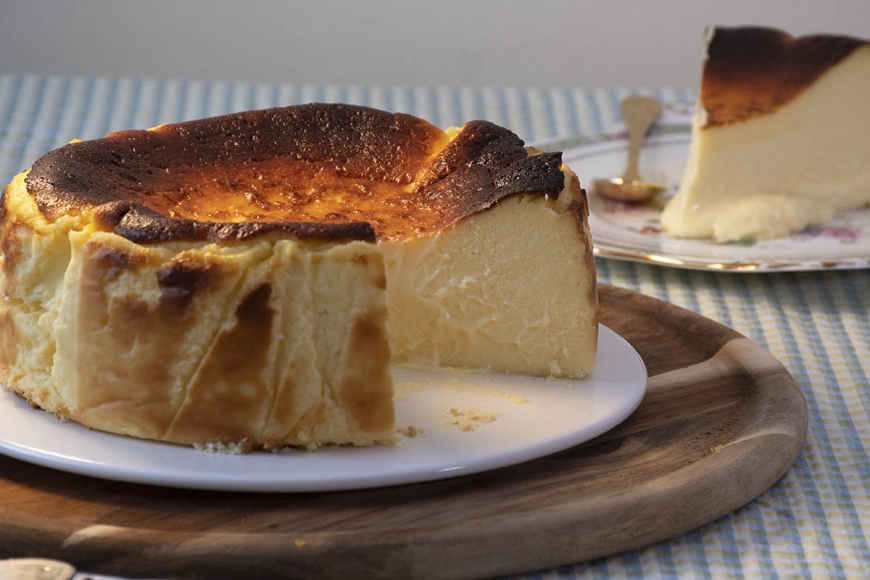
Making a Basque cheesecake is simple, requiring none of the fancy techniques or care that more finicky custard-based desserts often call for. Be sure to take your cream cheese out of the refrigerator a few hours before you will be baking, as room temperature cream cheese is ideal here. Mix the five ingredients until you get a homogenous batter.
The top secrets to making an authentic Basque cheesecake are, in fact, more about process than contents. The first is temperature— get the oven nice and pre-heated, at a relatively high temperature. This is what will result in the lovely golden brown-mottled top layer that is the Basque cheesecake’s hallmark.
The second Is the preparation of the cake mold. Use a smaller cake mold than you think you need—this will give the cheesecake a little extra height and make sure that the interior remains ever-so-slightly gooey and undercooked, another hallmark of this dessert. When you prepare the pan, use parchment paper cut slightly larger than the springform pan you are going to use. When you push down the paper, you will need to crease it in folds all around the ring, and this will give you the trademark Basque cheesecake look.
Where to Try Basque Cheesecake
Obviously, the best place to try Basque cheesecake is ground zero. Trying the original cheesecake at the source is a must, so head to La Viña for a slice. It will help to have a reference for every other cheesecake in town, since you’ll be seeing it at restaurants, bakeries, and shops all over. Just be warned—if you go during high season, you’ll likely have to wait in line, along with everyone else curious to get a taste of the famous Basque cheesecake.
